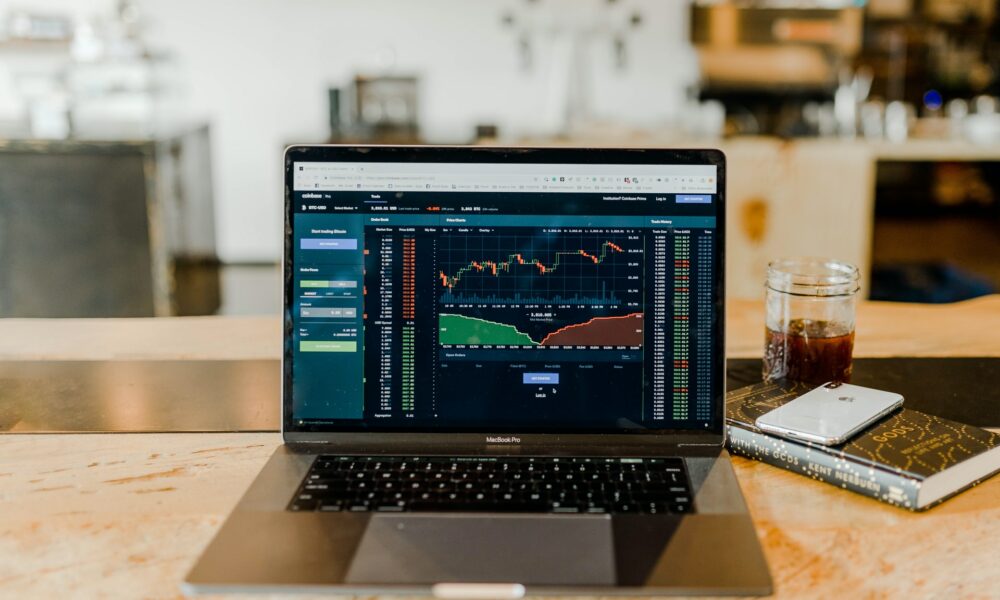
When weighing the benefits of yield farming, investors often ask: Should I invest or not in DeFi? There are many reasons why you should do this. One reason is yield farming, which can generate substantial profits. Early adopters can expect high token rewards and a rise in their value. This allows them to sell these token rewards for a profit, reinvest the profits, and reap more income than they would otherwise. Yield farming is an investment strategy that has proven to generate more interest than conventional banks. But there are risks. DeFi, which is subject to volatility in interest rates, is a less risky place to invest.
Investing in yield farming
Yield Farming allows investors to receive token rewards in return for a portion of their investments. Those tokens may increase in value very quickly and can be resold for a profit or reinvested. Yield Farming can offer higher returns than traditional investments but comes with high risk, such as Slippage. In times of high volatility, an annual percentage rates is not always accurate.
The DeFi PULSE website is a great place to see the performance of Yield Farming projects. This index tracks the total value cryptocurrencies held by DeFi lending platform. It also includes the total liquidity in DeFi liquidity pools. Investors use the TVL index to evaluate Yield Farming projects. This index can also be found on DEFI PULSE. The growth of this index indicates that investors are confident in this type of project and its future.
Yield farming can be described as an investment strategy that makes use of decentralized platforms to provide liquidity for projects. Yield farming offers investors the opportunity to earn significant cryptocurrency by acquiring idle tokens. This strategy relies upon smart contracts and decentralized trading platforms, which allow investors the ability to automate financial arrangements between two people. Investors who invest in a yield-farm can receive transaction fees, governance tokens, interest, and interest through a lending platform.

Identifying a suitable platform
Although it might seem like an easy process, yield farming can be difficult. One of the risks associated with yield-farming is the risk of losing your collateral. DeFi protocols are often developed by small teams with low budgets. This makes it more difficult to find bugs in smart contracts. There are several ways to reduce the risk of yield-farming by selecting a suitable platform.
A DeFi application that allows you to borrow and lend digital assets through a smart contract is known as yield farming. These platforms can be described as decentralized financial institutions that offer trustless opportunities for crypto owners. They are able to lend their holdings using smart contract and provide them with a way to make payments. Each DeFi application has its own unique characteristics and functionality. This will influence the way yield farming is performed. In short, each platform offers different rules and conditions for borrowing and lending crypto.
Once you've found the right platform you can begin reaping the rewards. You can use a liquidity pool to add your funds to yield farm. This is a network of smart contracts that powers a market. This type of platform allows users to lend or exchange tokens for fees. Users are paid for lending their tokens. You can start yield farming by investing in smaller platforms that allow you to access a greater variety of assets.
Identifying a metric to measure the health of a platform
It is crucial to establish a metric that measures the health of a yield farm platform. Yield farming involves the earning of rewards through cryptocurrency holdings like bitcoin or Ethereum. This process could be compared to staking. Yield farming platforms work with liquidity providers, who add funds to liquidity pools. Liquidity providers earn a reward for providing liquidity, usually from the platform's fees.

Liquidity is a metric that can be used to determine the health and viability of yield farming platforms. Yield farming is an automated market-maker model that uses liquidity mining. Yield farming platforms can offer tokens pegged to USD, or any other stablecoin. Liquidity providers receive rewards based on the value of the funds they provide and the protocol rules that govern the trading costs.
It is crucial to identify a metric that measures a yield farming platform in order to make an informed investment decision. Yield farming platforms are volatile and are susceptible to market fluctuations. These risks may be mitigated by the fact yield farming is a type of staking. This means that users must stake cryptocurrencies for a specific amount of time in return for a fixed amount. The risks associated with yield farming platforms make it a risky option for lenders and borrowers alike.
FAQ
Which crypto currencies will boom in 2022
Bitcoin Cash (BCH). It's currently the second most valuable coin by market capital. BCH is expected surpass ETH or XRP in market cap by 2022.
Will Shiba Inu coin reach $1?
Yes! The Shiba Inu Coin has reached $0.99 after only one month. This means that the cost per coin has fallen to half of what it was one month ago. We are still hard at work to bring our project to fruition, and we hope that the ICO will be launched soon.
How much is the minimum amount you can invest in Bitcoin?
For Bitcoins, the minimum investment is $100 Howeve
Statistics
- Something that drops by 50% is not suitable for anything but speculation.” (forbes.com)
- In February 2021,SQ).the firm disclosed that Bitcoin made up around 5% of the cash on its balance sheet. (forbes.com)
- As Bitcoin has seen as much as a 100 million% ROI over the last several years, and it has beat out all other assets, including gold, stocks, and oil, in year-to-date returns suggests that it is worth it. (primexbt.com)
- For example, you may have to pay 5% of the transaction amount when you make a cash advance. (forbes.com)
- This is on top of any fees that your crypto exchange or brokerage may charge; these can run up to 5% themselves, meaning you might lose 10% of your crypto purchase to fees. (forbes.com)
External Links
How To
How do you mine cryptocurrency?
While the initial blockchains were designed to record Bitcoin transactions only, many other cryptocurrencies exist today such as Ethereum, Ripple. Dogecoin. Monero. Dash. Zcash. These blockchains can be secured and new coins added to circulation only by mining.
Proof-of Work is a process that allows you to mine. In this method, miners compete against each other to solve cryptographic puzzles. The coins that are minted after the solutions are found are awarded to those miners who have solved them.
This guide will show you how to mine various cryptocurrency types, such as bitcoin, Ethereum and litecoin.